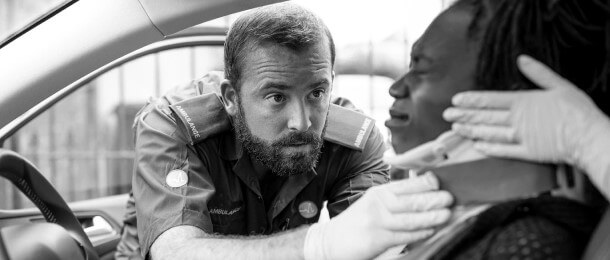News: 3 firefighters hospitalized after Hwy 47 crash in Uxbridge
UXBRIDGE, ON – Three firefighters were sent to a hospital after a crash on Highway 47 in Uxbridge on Monday,...
Gathering evidence at car accident scene is important in determining fault and liability, proving damages, and holding the responsible parties involved accountable to ensure you get a fair compensation. Without sufficient evidence, it is difficult to establish fault, and insurance companies may dispute your claims. This article will help you determine what evidence to collect to help your case:
Photographic & video evidence supplys important documentation of the accident. Make sure to capture:
Gathering witness statements is very critical in supporting compelling evidence, as they provide an unbiased account of what happened. Witnesses can be used to help establish who is at fault, verify driver behaviour, and any other relevant details.
How to Collect Eyewitness Statements:
1) Get Contact Information
2) Record Their Statement
3) Verify Their Willingness to Testify
Physical evidence plays a critical role in proving liability in car accident claims. The Toronto Police Service and insurance companies rely on physical evidence from the accident site to assess fault, determine damages, and verify the events leading up to the car crash. Properly documenting physical evidence can strengthen your personal injury claim and protect your rights.
2) Skid Marks and Road Conditions
3) Debris and Car Parts
4) Traffic Signals and Signage
5) Weather and Lighting Conditions
6) Surveillance Footage and Dashcams
7) Blood, Clothing, and Personal Items (If Injured)
Taking clear, detailed photographic evidence immediately after an accident is essential for supporting your personal injury claim, proving property damage, and to establish negligence for the at-fault party. Insurance companies, personal injury lawyers, and the police department rely on photo evidence and any other evidence collected to assess the extent of injuries and damages, determine liability, and to seek compensation for victims.
Medical records and bills play a critical role in supporting your claim after a car accident. Whether you are filling a claim with your insurance company or pursuing legal action, detailed medical documentation serves as concrete evidence of your injuries, hospital expenses, and long-term healthcare needs.
Why Medical Records Are Important
Key Medical Bills to Track:
When pursuing a claim for compensation after a car accident, ongoing medical treatment plays a critical role in both your recovery and legal case. Proper medical care ensures that you heal properly, while also providing documents evidence that supports your claim for medical expenses, lost wages, and long-term disability benefits.
1) Proves the Severity of Injuries
2) Strengthens Your Legal Claim
3) Supports Claims for Disability Benefits
Types of Ongoing Medical Treatment After a Car Accident
When a car accident lawsuit is filed, an official police report plays a critical role in proving fault and establishing liability. This document provides a detailed account of how the accident occurred, preserving evidence that is essential in legal proceedings.
In a legal process involving an auto accident, accident reconstruction specialists provide critical insights into how the accident happened. Their analysis helps establish negligence by examining factors like vehicle damage, road conditions, and impact force.
A car accident lawyer may use expert testimony to strengthen the injured party’s case, especially in complex situations like a pedestrian accident or cases where the other party disputes fault. These experts can clarify events leading to subsequent collision, ensuring a fair outcome for all parties involved.
After a motor vehicle accident, securing strong police reports, witness statements, and other types of evidence is key for proving how the accident happened. Legal professionals assist in gathering evidence, ensuring the injured party has the necessary documentation to establish fault. Important evidence such as photographs, medical records, and testimony can be critical in a successful claim.
A car crash often leads to disputes over responsibility, which makes determining fault a complex process. Lawyers often use police reports, expert analysis, and any other legal tools to strengthen the case against the other party. To prove negligence, lawyers can help victims navigate the accident claim process and seek equitable compensation.
At Grillo Law, we assist car accident victims in gathering, organizing, and presenting their medical records and bills to ensure they receive maximum compensation. If your insurance provider is delaying or denying your medical expenses claims, our experienced personal injury lawyers can advocate for your rights.
If you have suffered serious injuries in motor vehicle accident, pedestrian crash, or hit-and-run, don’t let insurance companies minimize your claim. Contact Grillo Law today for a free consultation and let us help you secure the compensation you deserve.

Blog
UXBRIDGE, ON – Three firefighters were sent to a hospital after a crash on Highway 47 in Uxbridge on Monday,...
HAMILTON, ON – A crossing guard was killed in a crash involving a trash truck in the Hill Park area...
BRAMPTON, ON – A man was left in critical condition as a result of a pedestrian crash that happened along...

Request a free consultation!
Call us today for a FREE consultation regarding your accident benefits claim.
Call: +1 855-225-5725
You will not pay any fees
until your case is won or settled
REQUEST A FREE CONSULTATION!
You will not pay any fees until your case is won or settled.
Thank you!
Amet minim mollit non deserunt ullamco est sit aliqua dolor do amet sint. Velit officia consequat duis enim velit mollit.